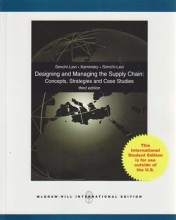Behavioural Neuroscience - BN Vision
22 important questions on Behavioural Neuroscience - BN Vision
What is the name of the fluid that fills the eyeball?
How does light enter the eye? And how does the image that enter the eyes get focused?
Describe the light sensitive cells (photosensitive)
Two types of these photoreceptors: rods and cones.
The rods and cones contain photopigments. These pigments break down when exposed to light. This leads to the neural impulses that are eventually conveyed to the brain by the optic nerve
- Higher grades + faster learning
- Never study anything twice
- 100% sure, 100% understanding
What are cones important for? Where are they concentrated at?
Concentrated in a region of the retina called the fovea,
Responsible for ability to see colour - different types of cones are also sensitive to different wavelengths of light
What do rods do? Do rods discriminate between different wavelengths?
They cannot discriminate fine visual detail.
Much more sensitive to light than cones - so they are used in dim environments
In dim environments, we cannot perceive colour because we are using rods
What do ganglion cells do?
The other two cell types in the middle layer of the retina called the horizontal cells and amacrine cells, combine messages from several photoreceptors
Do photoreceptors and bipolar cells produce action potentials? If not, what do they do?
What is the optic chiasm?
At the optic chiasm, roughly half the axons from the retina of each eye cross over to the opposite side of the brain. This causes visual information from the right visual field to be conveyed to the left hemisphere and vice-versa
Where is the LGN located and is there one in each hemisphere?
Where do neurons in the LGN form synapses with other neurons?
Do all LGN axons terminate in the primary visual coretx?
What is orientation preference?
This is the beginning of being able to identify the spatial structure in the visual scene.
Areas of the Primary Visual Coretex
Area V4 - neurons that are sensitive to the colour of visual inputs
Area MT - responsible for moving visual stimuli
Inferior temporal cortex - contains neurons that are selectively responsive to complex objects and faces
Damage to area V1 - When can it occur? What happens if that area is affected?
Damaged - Blind to all visual stimuli arising to the contralateral side of their present point of fixation, e.g., damage to V1 in the right hemisphere will cause blindness in the left visual field.
This disorder is called hemianopia
Damage to Area V4 - What happens if that area is affected?
These individuals continue to see forms and movement, so they are not completely blind.
Instead, one half of the world looks like a black and white movie.
Are patients with pure achromatopsia rare?
Damage to Area MT - What happens if that area is affected?
Damage to Inferior part of the temporal cortex
Are face processing different from other processing? What effect is this?
Thatcher Illusion - We fail to notice even quite striking visual anomalies when a face is shown upside-down.
What part of the brain is responsible for face recognition?
Damage to fusiform gyrus
How is a blindspot formed?
The question on the page originate from the summary of the following study material:
- A unique study and practice tool
- Never study anything twice again
- Get the grades you hope for
- 100% sure, 100% understanding
































